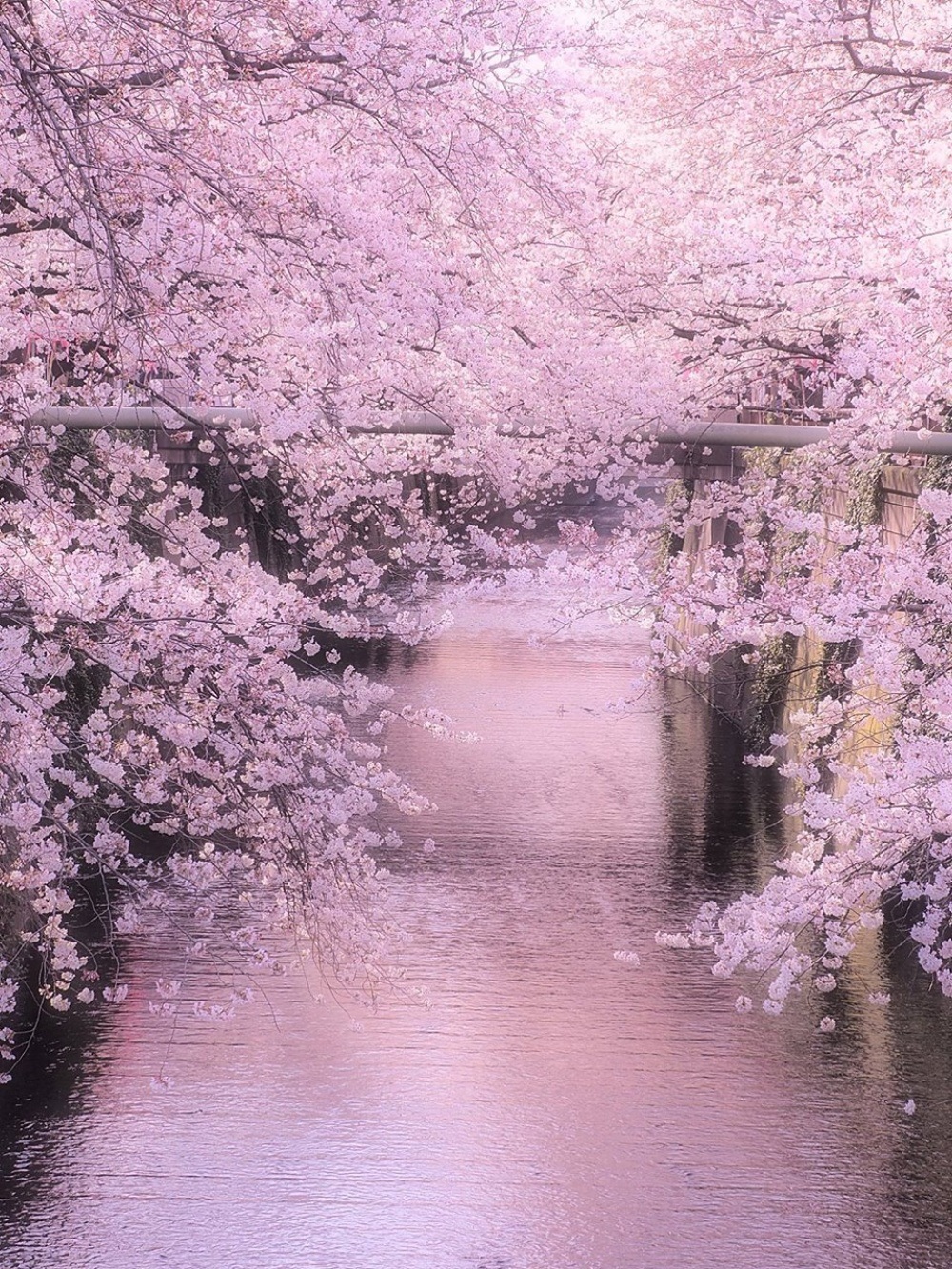In the heart of Japan, a breathtaking spectacle unfolds each spring, marking the arrival of cherry blossoms, known as Sakura in Japanese. These delicate blooms, belonging to the subgenus cherry within the Prunus genus, paint the landscape with hues of white, pink, and red, creating a scene of unparalleled beauty.
The enchantment of cherry blossoms lies not just in their colors but in their transient nature. The lifespan of a cherry blossom is a fleeting marvel, typically lasting between 7 to 15 days, with an average bloom duration of about one week. The specific lifespan varies based on the flower type and prevailing weather conditions during their bloom.
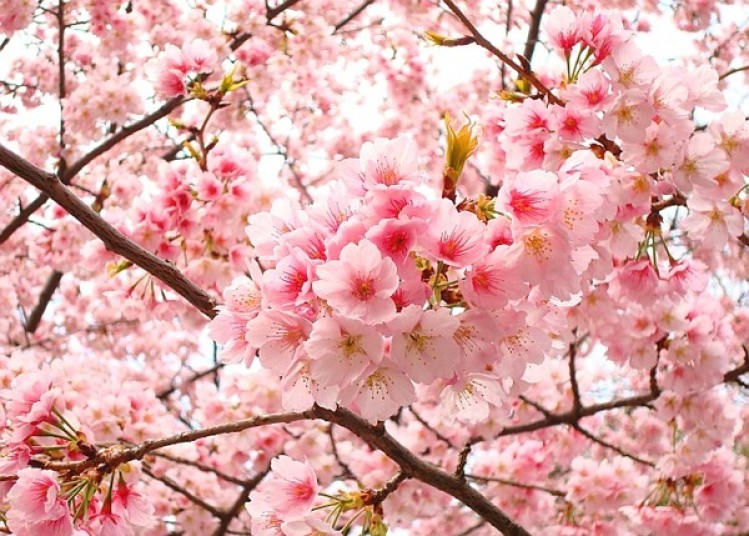
As the blossoms unfurl, they transform Japan into a sea of soft petals, creating an atmosphere of tranquility and renewal. Each petal represents a moment in time, emphasizing the ephemeral nature of life and the beauty found in its fleeting moments. The Sakura season, a symbol of renewal and the transient nature of existence, holds profound cultural significance in Japan, where people eagerly anticipate the arrival of spring to witness this natural spectacle.
Whether blanketing ancient temples, lining city streets, or gracing the banks of serene waterways, the cherry blossoms of Japan stand as a testament to the country’s deep connection with nature and the profound appreciation for the transient beauty that defines the Sakura season.

In the enchanting realm of Japanese cherry blossoms, Edo Higan emerges as a poetic masterpiece, deriving its name from the moment it graces the world—higan, the spring equinox. This unique variety of peach blossom blankets the landscapes of Japan, excluding the regions of Hokkaido and Okinawa, with a spectacle that unfolds from late March to early April.
What sets Edo Higan apart is not only its ephemeral beauty but also its enduring lifespan, making it the longest-lasting among cherry blossoms. Before the leaves unfurl, the delicate petals of Edo Higan burst into a display of colors, transitioning gracefully from pristine white to the soft hues of light pink. This gradual metamorphosis creates a visual symphony that captures the essence of the changing seasons.
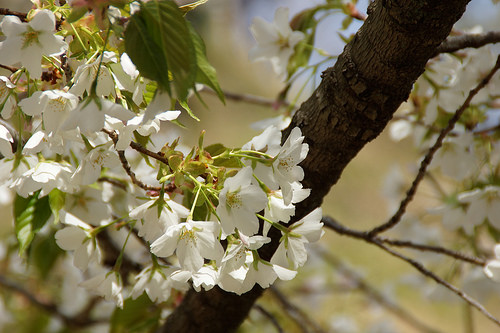
As nature awakens from its winter slumber, Edo Higan becomes a symbol of renewal and the imminent arrival of spring. The flowers, akin to delicate brushstrokes on the canvas of the Japanese landscape, impart a sense of tranquility and awe. Their bloom coincides with the onset of the cherry blossom season, enhancing the already captivating scenery with a touch of elegance.
Whether witnessed in the bustling streets of Tokyo or the serene countryside, Edo Higan’s bloom is a celebration of nature’s artistry, inviting onlookers to partake in the fleeting beauty that defines the sakura season. It is a testament to the delicate dance between life and the changing seasons, where each petal tells a story of renewal, grace, and the timeless allure of Japanese cherry blossoms.
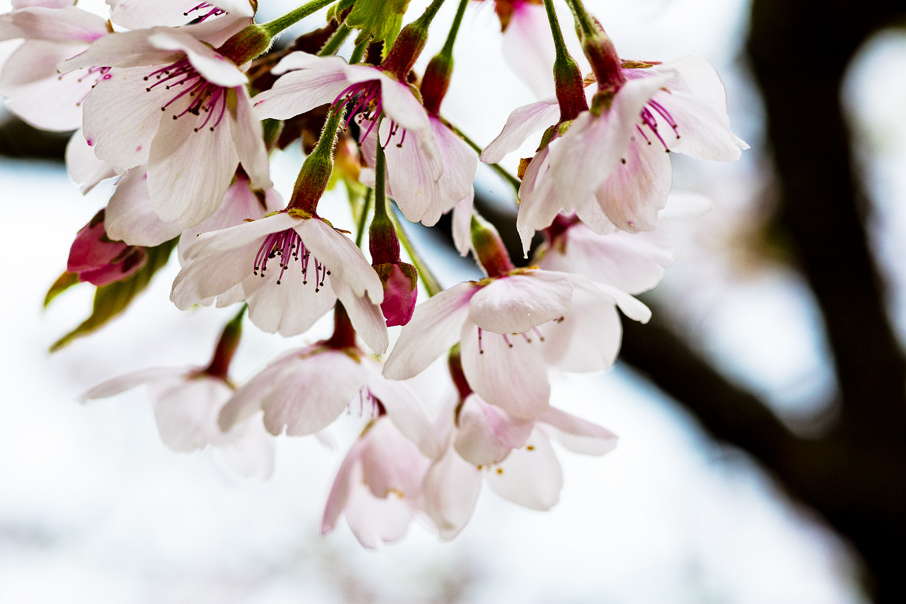
Oshima Zakura, originating from the scenic Izu Oshima Island south of Tokyo, stands as a botanical gem known for its coastal allure, often referred to as Kasumi Zakura or “island sakura.” What sets this cherry blossom variety apart is not only its delicate beauty but also the subtle, sweet fragrance that graces the air.
This coastal sakura species, thriving in the salty breezes of its island home, has become synonymous with the artful crafting of Sakura Mochi, a traditional Japanese sweet delicacy enveloped in salted sakura leaves. Beyond its culinary uses, Oshima Zakura plays a vital role in horticulture, contributing to the creation of various sakura hybrids.

With its pristine white blossoms, Oshima Zakura ushers in the arrival of spring, typically blooming in early April. The sight of these ethereal flowers, set against the backdrop of Izu Oshima’s coastal landscapes, creates a poetic spectacle that captivates locals and visitors alike.
As the delicate petals unfold, a celebration ensues, marking not just the changing of seasons but also the cultural significance of sakura in Japanese tradition. Oshima Zakura, with its dual identity as a coastal guardian and a symbol of culinary artistry, stands as a testament to the enduring beauty and versatility of Japan’s cherished cherry blossoms.

Among the myriad cherry blossom varieties gracing Japan’s landscapes, the Somei Yoshino stands as a peerless icon, seamlessly blending the distinct characteristics of Edo Higan and Oshima Zakura. Revered for its enchanting beauty, this particular cherry species has become the epitome of Japan’s fleeting yet mesmerizing springtime spectacle.
Renowned for its early bloom, Somei Yoshino takes the lead in Japan’s cherry blossom panorama. Its blossoms unfurl delicately in late March, painting the surroundings in a soft hue of light pink that transitions into early April. What sets Somei Yoshino apart is not just the timing of its bloom but the regal size of its petals, lending an air of nobility to its overall appearance.
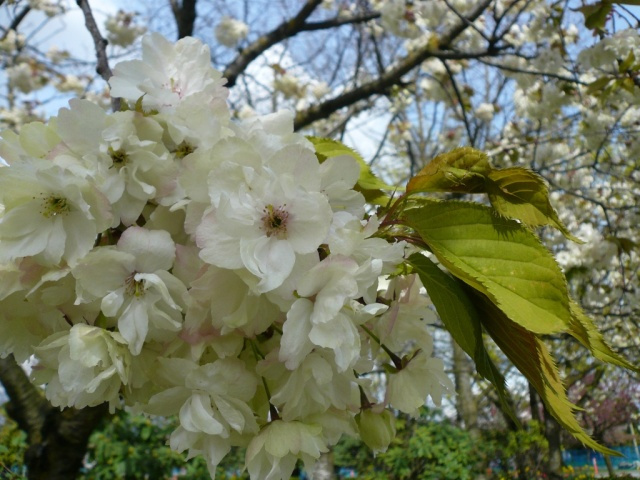
Interestingly, the Somei Yoshino we admire today is a testament to human ingenuity. Through meticulous hybridization and transplanting techniques, horticulturists have crafted these cherry trees, ensuring a breathtaking display each spring. Despite their ephemeral existence, lasting only a few decades, the original Somei Yoshino trees boasted lifespans extending centuries.
As Japan’s cherished harbinger of spring, the Somei Yoshino cherry blossoms not only signify the transient beauty of nature but also embody the meticulous artistry of human cultivation. Their delicate blooms, evoking a sense of tranquility and grace, continue to weave an enchanting tale of renewal and celebration across Japan’s cultural tapestry.

In the enchanting realm of Japanese cherry blossoms, the Kanhi Zakura stands as a symbol of ephemeral beauty, gracing the landscape with its radiant presence. As one of the earliest varieties to bloom, typically adorning the scenery in early March, the Kanhi Zakura captivates hearts with its captivating hues.
The nomenclature “Kanhi zakura” translates to “red-pink sakura,” a fitting designation for the dark-colored blossoms that characterize this particular cherry variety. It unfolds a spectacle of nature’s artistry, infusing early spring with shades of pink and red. However, this delicate beauty comes with a preference for warmer climates, showcasing its vulnerability to colder temperatures.

Native to regions with a favorable climate, the Kanhi Zakura finds its natural habitat in areas like the picturesque Ishigakijima island in Okinawa, located in the southern expanse of Japan. Its scientific name, “Campanulata,” hints at the bell-shaped allure of its blossoms, creating a harmonious visual symphony as they unfurl.
The blossoming period of Kanhi Zakura spans from early to mid-March, marking the inception of spring and symbolizing the renewal of life. Its significance transcends the temporal, embodying the fleeting nature of existence and the profound beauty hidden within transience.
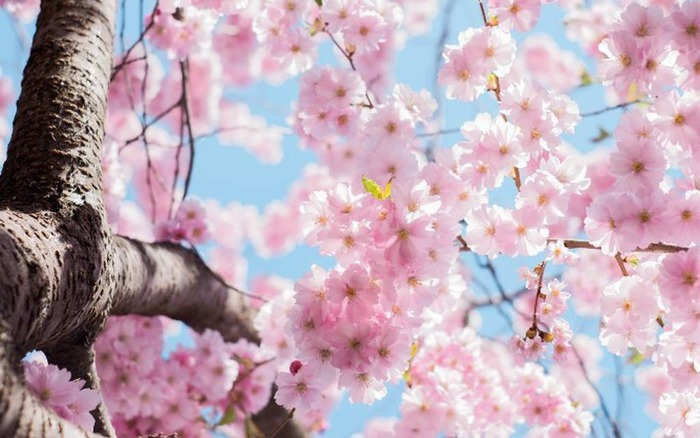
As we witness the Kanhi Zakura’s delicate blooms, we are reminded of the intricate dance between nature and time. This early-blooming marvel not only paints the Japanese landscape in mesmerizing hues but also invites contemplation on the transient yet timeless allure of cherry blossoms. In the embrace of Kanhi Zakura, we find a celebration of nature’s poetry, unfolding gracefully with every petal and evoking a sense of wonder that lingers in the heart.
In the kaleidoscope of Japan’s cherry blossom season, two exquisite varieties, Kanhi zakura and Yae zakura, stand out as enchanting blooms that paint the landscape with a rich tapestry of colors and textures.

Kanhi zakura, also known as winter cherry blossoms, graces Japan with its delicate presence in the early stages of spring. Distinguished by its pale pink hues and an elegant simplicity, Kanhi zakura is a harbinger of the seasonal transformation that captivates onlookers. As these blossoms unfold, they create a serene atmosphere, gently signaling the awakening of nature.
Yae zakura, a collective term for cherry blossoms with more than five petals, unveils a spectacular array of floral opulence. With varieties boasting 10 to 20 petals, Yae zakura manifests in diverse colors, including light pink, white, and dark red. What sets Yae zakura apart is its tendency to bloom later than other cherry varieties, extending its captivating display from late March to late April.

The Yae zakura group encompasses numerous cherry types, each contributing to the mesmerizing palette that adorns Japan during spring. These blossoms, with their intricate petal formations, evoke a sense of timelessness and beauty, transforming the landscape into a living canvas of artistry.
As these blossoms unfold their petals in a symphony of colors, they invite locals and visitors alike to partake in the Hanami tradition—a cherished practice of appreciating the transient beauty of cherry blossoms. Whether it’s the subtle elegance of Kanhi zakura or the flourishing canvas of Yae zakura, Japan’s cherry blossoms encapsulate the essence of renewal, celebration, and the fleeting yet profound nature of life.
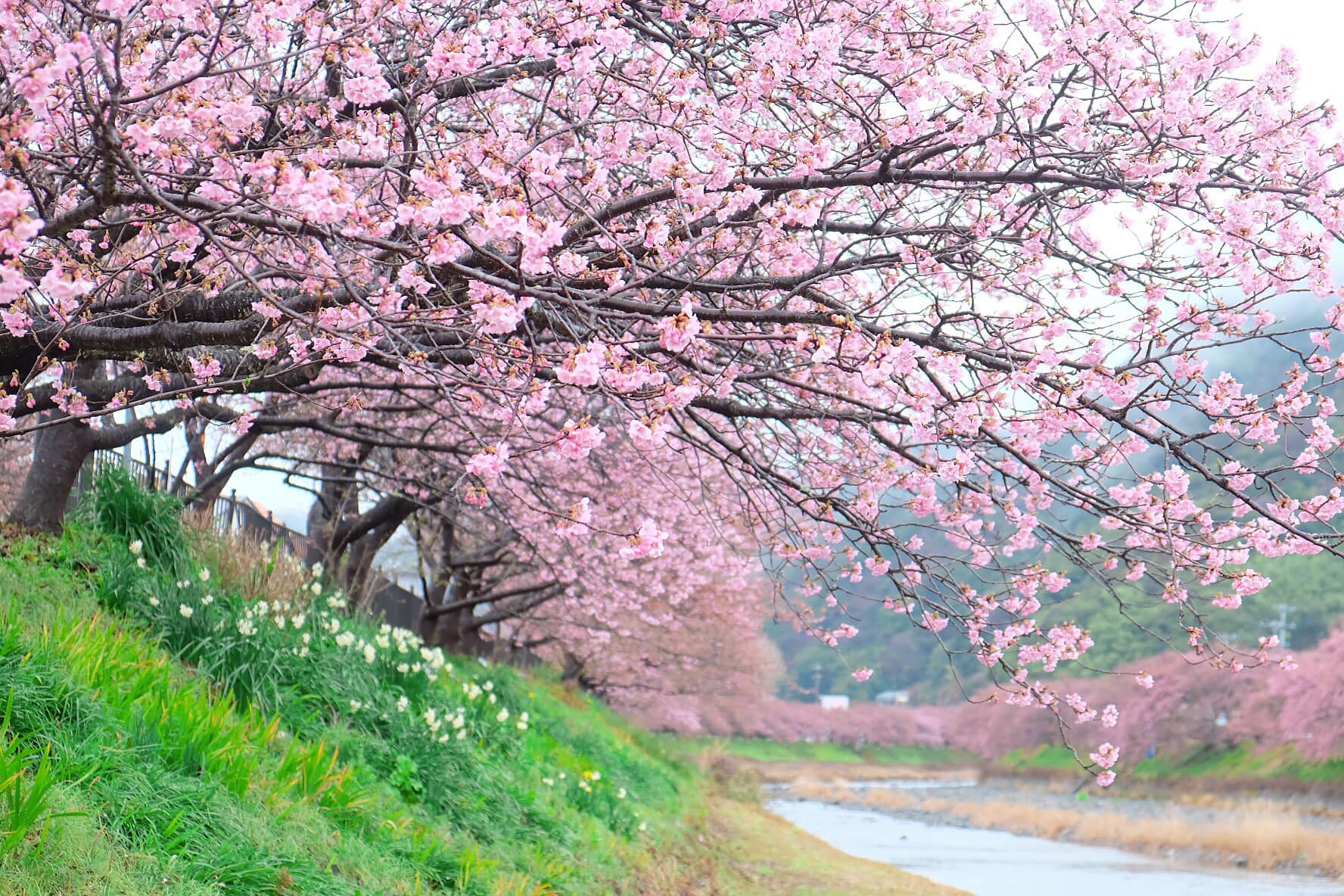
Ukon zakura, a truly unique and rare variety of cherry, captivates with its distinctive pale lemon yellow flowers, earning it the alternate name of “Kizakura.” The appellation “Ukon zakura” itself is derived from the striking resemblance of its blossoms to fabric dyed with the stems and roots of ukon, commonly known as turmeric. This exceptional cherry species is not only a botanical wonder but also carries cultural significance with its vibrant connection to traditional dyeing methods.
The enchanting blooms of Ukon zakura exhibit a remarkable multi-layered structure, boasting between 10 to 20 delicate petals that delicately unfold in an intricate dance of nature. What sets this cherry variety apart is its unique blooming schedule. Unlike its counterparts, Ukon zakura chooses to unveil its resplendent blossoms later in the spring, typically around the end of April. This late-blooming characteristic adds to its allure, making it a beacon of beauty when most other cherry varieties have already graced the world with their ephemeral presence.
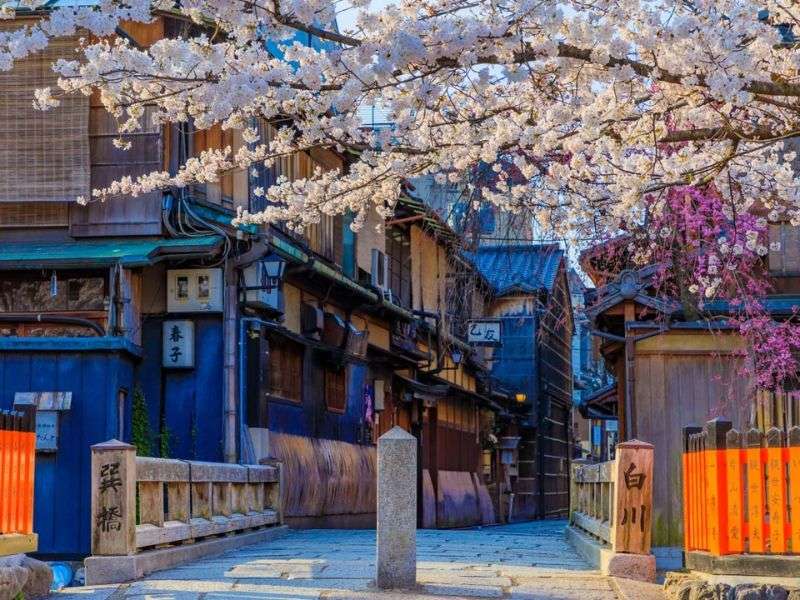
The choice of the name “Kizakura” speaks to the delicate craftsmanship and artistry inherent in the creation of this natural masterpiece. The pale lemon yellow hue of the flowers not only draws parallels to the vibrant tones of turmeric but also serves as a testament to the intricate palette that nature wields. It’s as if the cherry blossoms themselves are imbued with the rich cultural history of ukon dyeing, creating a living canvas that tells a story with every petal.
As Ukon zakura unfurls its blossoms in the later days of spring, it becomes a symbol of resilience and individuality. While other cherry varieties have already shared their beauty with the world, Ukon zakura chooses to bloom in its own time, adding a touch of uniqueness to the tapestry of nature. This tardy but spectacular display of flowers invites contemplation on the intricate rhythms and cycles of the natural world, encouraging us to appreciate the beauty that unfolds at its own pace.
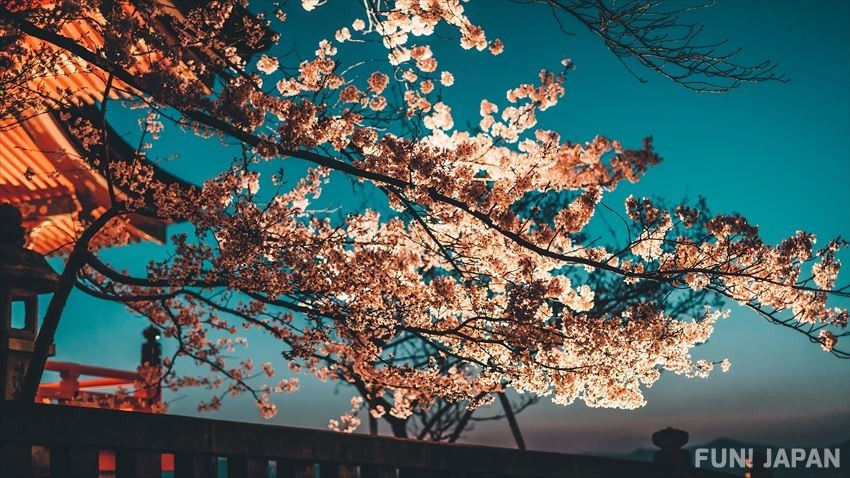
In the quiet moments of late April, when Ukon zakura graces the landscape with its lemon-yellow petals, it serves as a reminder that beauty, like time, is a fleeting yet precious gift. This rare and exquisite cherry variety beckons us to pause, appreciate, and marvel at the wonders of nature, reminding us that even in a world of constant change, there are timeless treasures that unfold with grace and poise.
In the presence of cherry blossoms, time seems to slow, allowing for moments of introspection and gratitude. Their fleeting presence reminds us to savor life’s fleeting moments, much like the delicate petals that scatter in the wind. The allure of cherry blossoms lies not only in their outward splendor but in the emotions they evoke—the nostalgia for springs gone by and the anticipation of springs yet to come.

In the grand tapestry of nature, the beauty of cherry blossoms is a poetic ode to transience, an eloquent reminder that even the most delicate of things can leave an indelible mark. As the petals gracefully fall, one after another, they leave behind a carpet of beauty, a testament to the profound impact of nature’s artistry. The beauty of cherry blossoms, with its ephemeral charm, etches itself into our hearts, a timeless memory that lingers long after the petals have bid their gentle farewell.
